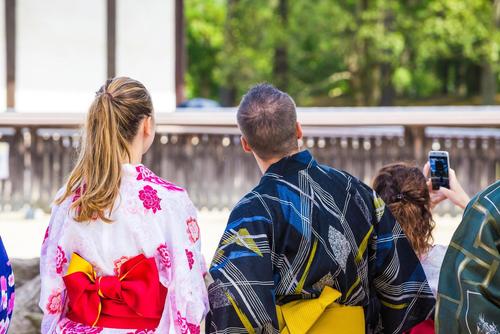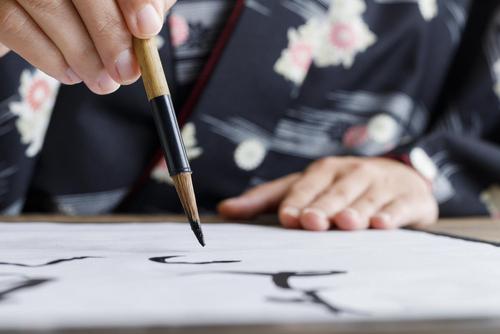When foreigners learn about Japanese culture, what kinds of activities can help them experience the Japanese "wa" (harmony)? Japan's unique Japanese culture, which does not exist in other countries, is extremely fascinating to foreigners. From a foreigner's perspective, Japanese culture has a calming charm within its dignified beauty. To those of us who grew up as Japanese, the many elements of Japanese culture may seem like everyday sights. However, to foreigners, these are perhaps some of the aspects that strongly evoke Japanese culture. In this article, we introduce eight Japanese activities that foreigners will find interesting. Please take a look at these Japanese activities to reaffirm the appeal of Japanese culture that only Japanese people can understand, and to foreigners, we can confidently recommend them.
Foreigners are fascinated by this Japanese-style lesson where you can feel the essence of Japanese culture everywhere

Japanese traditional culture lessons are seen as exotic and fascinating by foreigners, and they attract a great deal of interest. One reason for this is the "politeness" that is inherent in the various gestures and movements, which reveal a careful spirit. Many Japanese traditional culture lessons cultivate this "politeness" and create a sense of "beauty." Growing up as Japanese people, we naturally possess "politeness." As a result, the perception overseas that Japanese people are polite in all situations is widespread. Because of this Japanese culture, those aspiring to become Japanese language teachers will find it advantageous to have a thorough knowledge of Japanese traditional culture lessons.
8 Japanese Lessons That Symbolize Japanese Culture That You'll Want to Learn!

By taking up Japanese-style lessons and acquiring knowledge, you can concretely introduce the appeal of Japanese culture to foreigners. Below, we will introduce eight Japanese-style lessons that are symbolic of Japanese culture.
1. Tea ceremony
In the tea ceremony, the expression "brewing tea" is not used to describe pouring tea, but rather "making tea." In the tea ceremony, matcha powder is added to hot water and stirred with a bamboo stick. Tea ceremony has a series of procedures for making tea, which differ depending on the school.
2. Flower Arranging
Ikebana is one of the traditional Japanese arts of arranging seasonal flowers, and has methods that have been passed down since ancient times. There are different schools of Ikebana, and each school has its own unique philosophy and theory of flower arranging, depending on the founder. A representative school is the "Sansenke," which was popularized by the grandson of Sen no Rikyu.
3. Dressing
Dressing refers to the manners of dressing someone beautifully in traditional Japanese clothing such as kimonos and yukatas. Kimonos (traditional Japanese clothing) have set rules for things like underwear and obi-jime (sash belts), and by wearing them beautifully, you can achieve the beauty of Japanese culture.
4. Pottery
Pottery is one of Japan's traditional arts, characterized by its timeless appeal and delicate aesthetic sense. Pottery is made only from clay, but when a potter creates it, it is transformed into art through the use of blue and white porcelain and kiln-fired porcelain, and it is a culture that can captivate the soul even if you just look at it. Pottery is an art that is created by creating it with a calm mind, so it is also an art that is suitable for regulating your mental state.
5. Japanese Dance
Nihon buyo is a traditional performing art, along with Noh, Kabuki, Bunraku, and Kyogen. It is said to have evolved from the "dance" of Kabuki, and the word "dance" is used because it involves dancing. Nihon buyo is a dance performed to music and rhythm within traditional Japanese etiquette.
6. Calligraphy
Calligraphy is a traditional Japanese culture that expresses the beauty of characters through writing. The beauty of calligraphy also has its appeal as an art, and is expressed by writing characters with a long history correctly and beautifully. The difficult part of calligraphy is calming the mind and bringing out the inherent beauty of the characters.
7. Koto
The koto is one of the traditional Japanese instruments played in Japan. It is made by artisans using traditional techniques passed down from ancient times, and the sound it produces has the power to soothe the soul and captivate the listener. The history of the koto is said to date back to the Heian period, and it is described in works such as "The Tale of Genji" and "The Pillow Book," proving that it has been loved in Japan for a long time.
8. Tanka and Haiku
Tanka and haiku are fixed-form poems that represent traditional Japanese culture. Haiku is 17 characters long, arranged in a 5-7-5 pattern, while tanka is 31 characters long, arranged in a 5-7-5-7-7 pattern. Tanka does not have seasonal words, but haiku is characterized by its use of seasonal words, and both are characterized by putting into words human emotions, landscapes, nature, etc.
summary
Japanese lessons, which are symbolic of Japanese culture, have an exotic appeal to foreigners, giving them a sense of harmony, and they contain characteristics that are connected to the roots of Japan's "politeness." If you are aiming to become a Japanese language teacher, we recommend that you acquire knowledge and experience the following eight lessons introduced in this article.
tea ceremony
Flower Arranging
Dressing
pottery
Japanese dance
calligraphy
Koto
Tanka and haiku
By teaching this culture to foreigners, you can smoothly convey the Japanese culture of "wa" (harmony). Being born Japanese means that you have been exposed to a lot of Japanese culture, learning the charm and etiquette of carefully selected lessons, and introducing them to foreigners, so that Japanese culture will be passed down through the ages. Please try deepening your knowledge of the wa lessons introduced in this article, which are symbolic of Japanese culture.
Mini lesson corner
Learn about Japan and the Japanese language!
"The correct way to eat Japanese sweets (jo-namagashi) in 90 seconds"
This article was originally published in Nihongo Biyori and has been partially re-edited by KARUTA.
